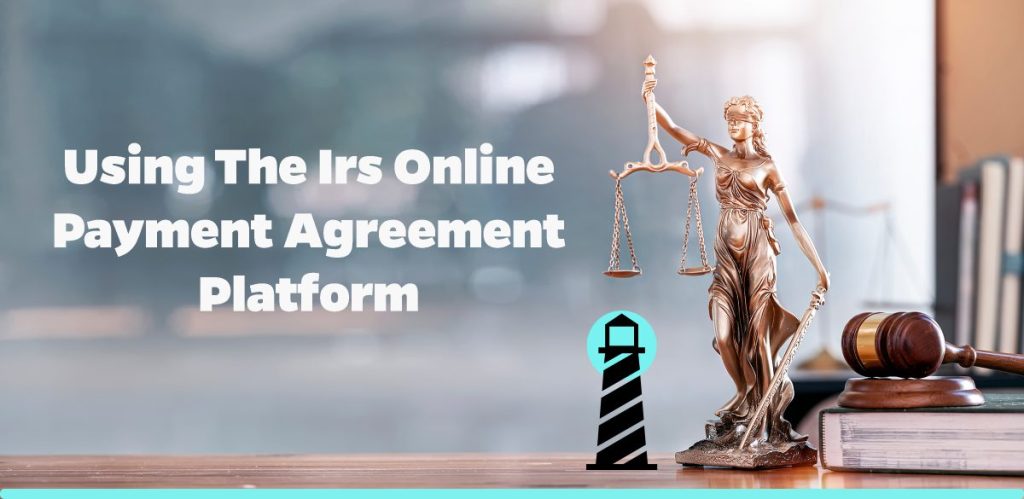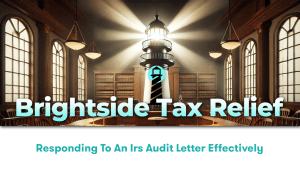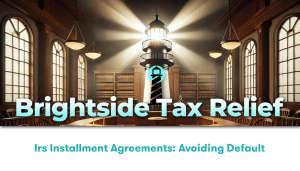Understanding the IRS Online Payment Agreement
Before diving into the details, it’s crucial to understand what exactly the IRS Online Payment Agreement (OPA) is. As countless Americans know, handling IRS financial matters can often be a source of stress. Thankfully, with the IRS OPA, the process of arranging tax payments just got a whole lot easier. Implemented by the Internal Revenue Service, the IRS OPA is an interactive tool that citizens to arrange a payment plan for their outstanding tax bills online.
We, at Brightside Tax Relief LLC, understand the tremendous burden that a lingering tax bill creates. To help taxpayers easily navigate and utilize the IRS Online Payment Agreement, we have crafted this detailed guide.
Eligibility for the IRS Online Payment Agreement
Before setting up a payment plan through the IRS OPA, first check whether you are indeed eligible for such an agreement. Here are the primary eligibility norms set by the IRS:
You must be an individual who owes $50,000 or less in combined tax, penalties, and interest.
You must be a business that owes $25,000 or less in payroll taxes and have filed all necessary tax returns.
If you qualify, you can set up your agreement online.
Benefits of the IRS Online Payment Agreement
The IRS Online Payment Agreement system undoubtedly brings tremendous value to taxpayers. Here’s how:
Quick and easy set-up: You no longer need to mail or call the IRS to arrange a payment plan. The IRS has made it extremely user-defined and quick to set up a plan online.
Flexible payment options: The IRS OPA allows you to choose from a variety of payment options. Whether it’s direct debit, payroll deduction, check, money order, or credit/debit card, you can choose the one that suits you best.
* Immediate notification: Once your payment plan is approved, IRS will notify you immediately thereby eliminating a waiting period.
How to Use the IRS Online Payment Agreement: A Step-By-Step Guide
Using IRS Online Payment Agreement can be easily integrated into your tax payment process. Here are the main steps:
1. Visit the official IRS website and navigate to the IRS Online Payment Agreement page.
2. Review your tax records to make sure all filings are correct and up-to-date.
3. Click on the ‘Apply/Revise’ button on the OPA page.
4. You will now be prompted to provide identity verification information.
5. On successful verification, you will be required to specify the type of tax you owe, the tax form number, and the amount owed.
6. Finally, you have to pick your preferred payment method and submit your application.
7. The IRS will then review your request, and upon approval, you will be notified.
Understanding the Various IRS Payment Plan Options
Upon navigating to the IRS’s Online Payment Agreement page, you will find a variety of payment options. The most common ones include short-term payment plans (paying in 120 days or less) and long-term payment plans (paying in more than 120 days).
Implications of Not Meeting the Agreement Terms
While the IRS OPA provides the convenience of setting up a payment plan, it’s important to stick to the terms. Defaulting on the agreement can lead to penalties such as a federal tax lien or levy.
Seek Professional Help
Navigating the IRS Online Payment Agreement system can sometimes be overwhelming, and professional help can be invaluable. At Brightside Tax Relief LLC, we offer expert guidance to help taxpayers effectively use this payment mechanism and ensure a smoother process.
Final Thoughts
The IRS Online Payment Agreement is indeed a significant tool in the tax-paying process, ensuring an easier and more manageable system for taxpayers to settle their dues. However, its successful utilization requires a careful understanding of each step involved.
With Brightside Tax Relief LLC, you can effortlessly navigate through this process, knowing you have expert assistance every step of the way. Remember, understanding and utilising this tool effectively is the first significant step to gaining control of your tax situation.




